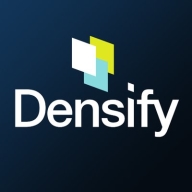

Oracle Enterprise Manager Cloud Control and Densify are both robust tools in the IT infrastructure and cloud management sector, with Oracle standing out for comprehensive management capabilities, whereas Densify is better recognized for its advanced optimization features.
Features: Oracle Enterprise Manager Cloud Control offers powerful monitoring, integrated automation tools, and robust analytics across diverse environments, designed to streamline IT management tasks. It provides an extensive suite for database administration, allowing centralized backup strategies and high-level performance diagnostics. Densify focuses on dynamic optimization and resource utilization, utilizing predictive analytics for resource allocation and efficiency improvement. Its tools are geared towards maximizing server density and identifying operational bottlenecks.
Room for Improvement: Oracle Enterprise Manager Cloud Control could benefit from simplifying the user experience and reducing complexity in its deployment processes. Enhancements in real-time data insights and intuitive dashboards may also be advantageous. Densify could improve in providing deeper insights into applications' performance impacts and faster integration abilities with external systems. Augmenting its existing interface for more user-friendly navigation would also add value.
Ease of Deployment and Customer Service: Oracle Enterprise Manager Cloud Control is praised for its strong customer support, despite a complex deployment process that demands expertise and time. On the contrary, Densify offers an easier setup with seamless integration capabilities, accompanied by responsive support services, making it attractive for businesses seeking quick deployment.
Pricing and ROI: Oracle Enterprise Manager Cloud Control's high setup cost is balanced by its comprehensive management solutions that promise long-term ROI for large enterprises. Densify presents competitive pricing focused on optimization, resulting in immediate ROI through reduced resource costs and efficiency improvements, making it ideal for organizations targeting cost savings.


Densify is a hybrid cloud and container resource management platform that makes workloads self-aware of their precise resource requirements and automates the resource management and selection process. This solution helps you control your cloud spend and also helps your apps perform and scale better. Densify enables you to match your cloud requirements with the optimal cloud supply. Additionally, Densify is the only technology that leverages patented, predictive machine learning-powered analytics to perform advanced modeling of workload patterns, and provide precise optimization directives. It is ideal for cloud engineers, container platform owners, and IT finance.
Densify works by:
Densify Features
Densify has many valuable key features. Some of the most useful ones include:
Densify Benefits
There are many benefits to implementing Densify. Some of the biggest advantages the solution offers include:
Oracle Enterprise Manager is Oracle's integrated enterprise information technology (IT) management product line, which provides the industry's only complete, integrated, and business-driven enterprise cloud management solution. Oracle Enterprise Manager creates business value for IT by leveraging the built-in management capabilities of the Oracle stack for traditional and cloud environments, enabling customers to achieve unprecedented efficiency gains while dramatically increasing service levels.
We monitor all Cloud Management reviews to prevent fraudulent reviews and keep review quality high. We do not post reviews by company employees or direct competitors. We validate each review for authenticity via cross-reference with LinkedIn, and personal follow-up with the reviewer when necessary.